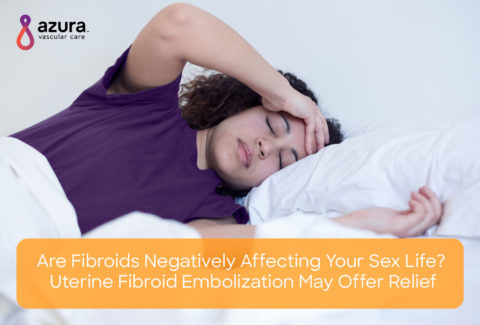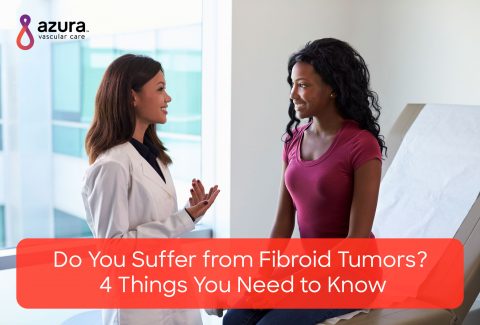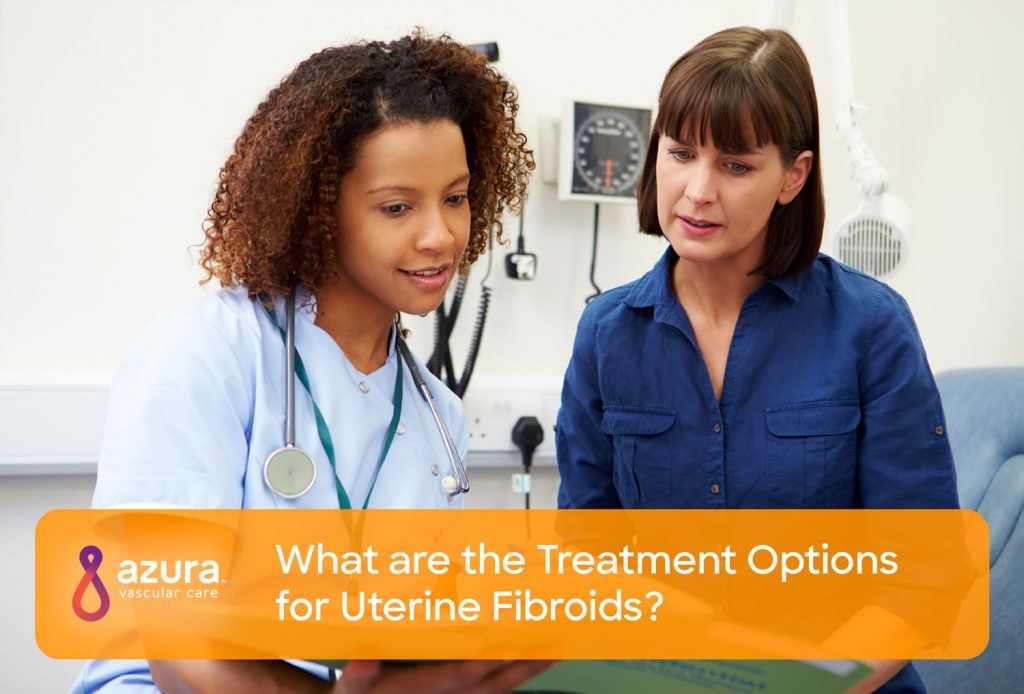
If you were recently told that you have uterine fibroids, noncancerous tumors of the uterus, you’re probably wondering about the available treatment options. While the cause of these benign tumors is unknown, there are many different approaches to the management of this condition. Uterine fibroid treatment options range from drug therapy to surgical removal of the fibroids, and possibly even the uterus, to minimally invasive options. You should, along with the help of your medical provider, make a decision on treatment based upon your own situation and diagnosis. If fibroids are beginning to interfere with your life, whether through pain, heavy bleeding, or other symptoms, it is important to be aware of and understand all of your options. Whether you have one or multiple uterine fibroids, treatment options of varying degrees are available for you.
6 Treatment Options for Uterine Fibroids
Drug Therapy Options
Most of the drug therapies available to treat uterine fibroids can be effective for symptom relief, but may not impact the size of your fibroid(s) and could have side effects when used for a long period of time.i
1. Hormonal Treatments
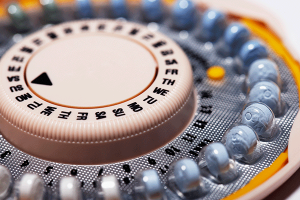 Used to control heavy periods by inhibiting the natural menstrual cycle. Examples include birth control pills and medroxyprogesterone, also known as Depo-Provera.
Used to control heavy periods by inhibiting the natural menstrual cycle. Examples include birth control pills and medroxyprogesterone, also known as Depo-Provera.
Benefits:
- Can be effective in reducing menstrual blood loss.
Disadvantages:
- Unlikely to change the size of fibroid(s).
- Many drug therapies can increase your risk of developing a blood clot.
- May not be able to be used in smokers over the age of 35.
- Could lead to high blood pressure.
- Can interfere with the body’s natural hormonal balance.
- Might have an impact on bone strength.ii
2. Intrauterine Device (IUD)
A progestin-containing intrauterine device (IUD) is a hormone containing t-shaped device that prevents pregnancy. The IUD is placed inside the uterus and works to inhibit your natural menstrual cycle.
Benefits:
- Inserted in the medical office without the need for sedation.
- Can be effective in reducing menstrual blood loss.
Disadvantages:
- Does not change the size of the fibroid(s).
- The device can be spontaneously expelled from uterus.
- Can be associated with ovarian cysts and acne.
Surgical Procedures
3. Myomectomy
A surgical procedure involving removal of one fibroid at a time. This procedure allows your uterus to remain intact.
Benefits:
- Removal of fibroids.
- Uterus is left intact, preserving fertility potential.
Disadvantages:
- Fibroids may recur.
- It’s possible that not all fibroids can be removed.
- May be a complicated procedure with the removal of multiple fibroids.
- General anesthesia may be required.
- Can result in adhesions or scar formation.iii
4. Hysterectomy
A surgical procedure involving removal of the uterus, along with the fibroids it contains, with or without removal of the ovaries.
Benefits:
- Is curative.
Disadvantages:
- Will be unable to have children.
- General anesthesia is required.
- Increased risk of bleeding that may require a blood transfusion.
- Likely to require pain medications.
- Can lead to adhesion and scar formation.
- Risk of blood clots, bleeding, and infection following the surgery.
- 6 weeks of recovery time.iii
Minimally Invasive Techniques
5. Endometrial Ablation
Involves destruction of the lining of the uterus to lessen bleeding.
Benefits:
- Lessens bleeding.
- Procedure is less than 1 hour.
Disadvantages:
- Only treats superficial fibroids within the uterus.
- May impact ability to become pregnant and maintain a successful pregnancy without complications.iv
RELATED: What Are the Risks of Uterine Fibroid Embolization?
6. Uterine Fibroid Embolization (UFE)
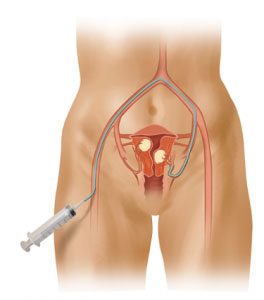 Uterine fibroid embolization involves an interventional radiologist placing a catheter in the artery that supplies blood to your uterus. Once in the correct location, beads are placed within the artery to block blood flow to the fibroids.iii
Uterine fibroid embolization involves an interventional radiologist placing a catheter in the artery that supplies blood to your uterus. Once in the correct location, beads are placed within the artery to block blood flow to the fibroids.iii
Benefits:
- Leaves your uterus intact.
- Good relief of symptoms.
- Procedure takes about 1 hour and only requires light sedation.
- Short recovery time — many women return to normal activities within 8-14 days.
- All of the fibroids can be treated in one procedure.
- Less risk than other procedures.
- Fibroids unlikely to recur.
- Minimal blood loss.
RELATED: The Benefits of the Uterine Fibroid Embolization Procedure
Disadvantages:
- May have mild to moderate pain for the first 12 hours after the procedure; medication may be needed.
- Potential to have complications related to catheter site.
- Unpredictable impact on ability to become pregnant.
Not all women need to pursue treatment for their fibroids, but for women who do need treatment, surgery is not always necessary. If you are interested in pursuing a non-surgical option, such as UFE, the next step is to schedule a consultation with an interventional radiologist. This UFE specialist will review your medical history and your goals in order to help you decide if UFE is the right choice for you.
Sources:
i Moroni, R., et al., Pharmacological Treatment of Uterine Fibroids. Ann Med Health Sci Res, 2014. 4 (Suppl 3): p. S185-92
ii Estrogen and Progestin (Oral contraceptives). 09/15/2015
iii Khan, A.T., M. Shehmar, and J.K. Gupta, Uterine fibroids: current perspectives. Int J Womens Health, 2014. 6: p. 95-114
iv Mara, M. and K. Kubinova, Embolization of uterine fibroids from the point of view of the gynecologist: pros and cons. Int J Womens Health, 2014. 6: p. 623-9

